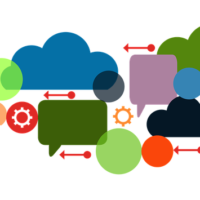How to Become a Digital Leader in Your Market
During our recent Digital Inspiration Square, Sofie Sandell, a digital expert from the UK, shared her learnings and insights on how to become a digital leader in your market. Special attention was given to applying digital marketing techniques in a Business-to-Business context.
B-to-B = P-to-P
Basically, B-to-B is about people-to-people: it is not companies that buy from other companies, it’s people in companies that buy from other people in other companies.
Surely, a company has its reputation, history and values to throw in the basket, but it are the people that make the company. The proof: how many times did you recently check out your business contacts in LinkedIn?
And how many times did you analyse your business partners’ website in detail? Right …
In result, typical B-to-C techniques applied in digital media to get a brand story through to your audience might work as well in B-to-B.
Think for example about user groups as an alternative for a technical service department, Youtube as a training channel, Pinterest to showcase your portfolio, …
Same online touch points, different approaches
An important difference between digital marketing in B-to-B versus B-to-C is not which online channels and touch points you use but how you use them.
Take Facebook, for example: in B-to-C, it is where your consumers are and used in a creative way it can be and interesting channel to generate brand attraction.
In B-to-B, however, Facebook would not be the most obvious place to reach your prospects. They are there but in their free time and you’d better not disturb them with work stuff.
Facebook can be interesting, however, as a recruitment channel for new employees.
Lead generation is key
Whereas in B-to-C online media are mostly used to generate brand attraction and preference, in B-to-B companies expect their digital marketing efforts to generate qualified leads for sales immediately.
This is not an easy task, as not all channels and touch points lend themselves for lead generation.
So it is about being creative and making use of available tracking technologies, so that you you know who has been looking at your postings on LinkedIn, downloaded your whitepaper on your website or on Slideshare or left a comment on your technical blog.
And about gathering all information in a (light) CRM system for further follow-up.
The advantage of digital interaction channels, is that you can precisely measure the impact of your actions and you can easily test different approaches in A/B-testing for further optimization.
The real gain, however, lies in the integration of your online tactics with your offline activities via sales teams, events, trade fairs, … so that they nurture and strengthen each other.
As in B-to-C, it starts with putting your customers in the centre, no matter what kind of business you are in.
You have to make sure that you know their needs and behaviours so that you can better anticipate and help them by offering the right technical solution via the right channel.
You have to be a good listener and be open for feedback, as well internally as externally. And last but not least: you have to make sure your whole company is involved in the process.


